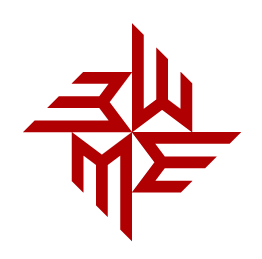What's a gluebook, anyway?
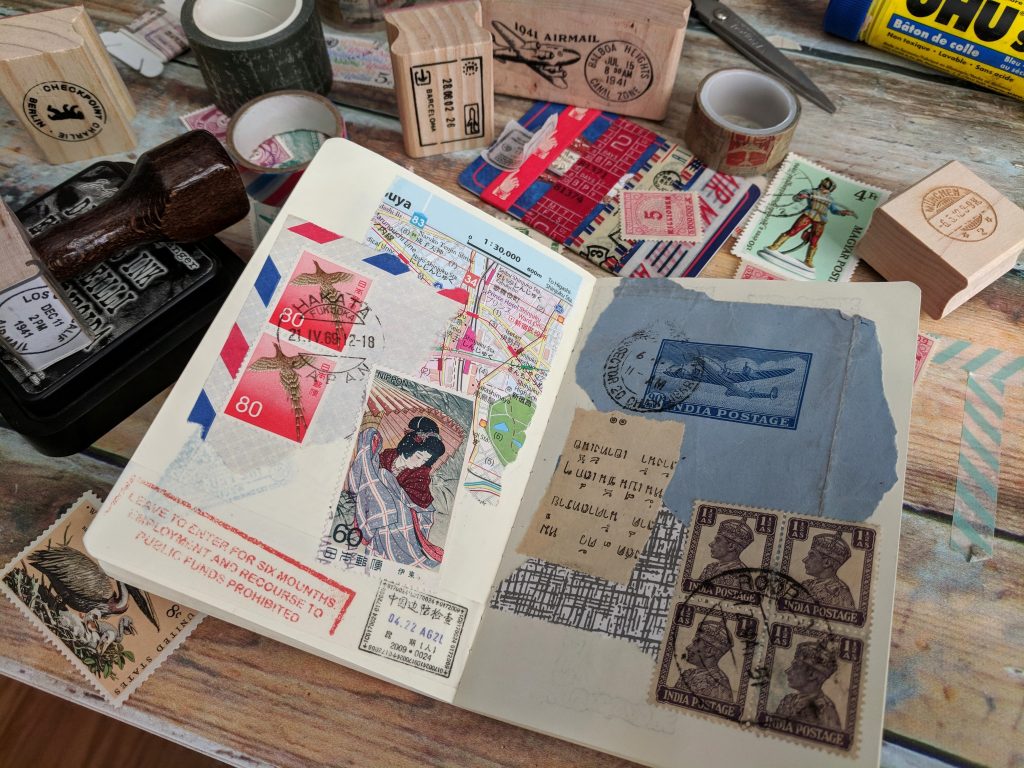
I make a lot of collage art and put them in things like gluebook. But what is a gluebook exactly? There isn’t a definitive answer, but it’s not a difficult idea to wrap your head around.
A gluebook is a “book” where you glue things (like a collage) in. The following are some examples:
- A new, blank notebook that you decide you want to glue things in
- An old book that you want to glue things on top of the pages
- Pages of blank copy paper that you fold in half (called a signature) that you use as a kind of a notebook
- Scraps of paper that you cut down to a uniform size and bind together into a book.
- A stack of manila folders that you cut or bend into a certain size, hole punched at the margin, and rings used to keep the pages together
- A stack of index cards with a hole punched in an upper corner, with a ring on it.
As you can see, anything can be turned into a gluebook. It’s not important what it was before you made it into a gluebook. It becomes a gluebook when you start gluing things into it.
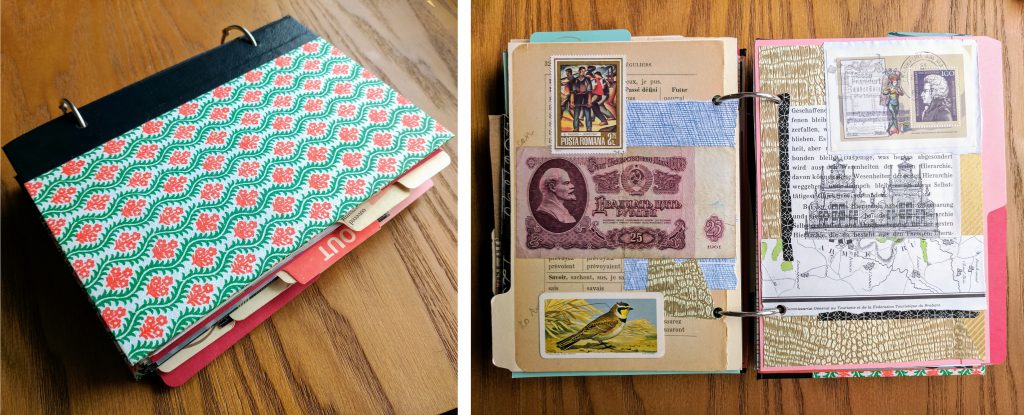
What is it for?
I like gluebooks as a place for my collages. Specifically, I make collages using images that are vintage or reproductions of papers in a vintage style. It makes me happy to use these kinds of papers, and it makes my imagination take off. I love handling old papers and giving them a second life through art.
Everyone has their own interests and likes. Are you a person who saves bits of papers somewhere in a drawer or shoebox of pretty things? Snippets from a magazine, old stamps from an envelope, old concert tickets, letters, old photos, pretty food packaging, stickers, wine labels, etc? A gluebook would be a perfect place for those things. You don’t even need to make a collage out of them, just glue them in your book, almost like a diary.
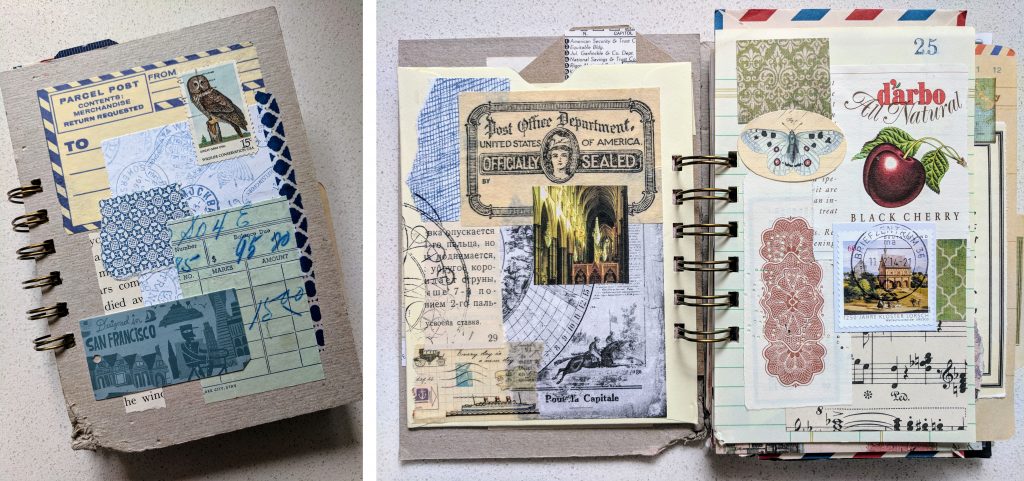
But the question still is there: what is it for? Does it need to be for something other than the fact that it makes you happy? Why do people buy and color in a coloring book? What’s it for? Maybe it’s to help you relax, or to distract you from too much on your mind. Maybe you just love coloring and colors in general. It’s like that for gluebooks. Why do you do it? Because it’s relaxing, and if you love paper, it’s something about scissors, cutting and gluing papers on pages, in a fashion that is pleasing to you.
Are they called anything else besides gluebooks?
They can also be called smashbooks. It’s possible they could be scrapbooks if the pages are done in a consecutive “storytelling” kind of way. Another term I’ve heard is “zibaldone”, which is a fancy Italian word that means miscellany. Shannon Green calls them “journals for no reason”, because she says they have no purpose, and were not created with a goal in mind. I like that open idea. It means that you are not confined to a set idea for what you choose to put in your gluebook. Shannon has many wonderful videos on what her “journals for no reason” look like.
How do you make a gluebook?
I gave some examples above of what a gluebook could look like. It’s up to you to decide if you want to spend the time creating your gluebook from things you may already have, or if you want to get a blank notebook or a stack of clean index cards. I have made gluebooks from junk journals, but that’s a lot of work. It’s also fun to take an old book that you may have bought at a used book sale, and turn it into an “altered book” by tearing out some of the pages, and gluing sets of other consecutive pages to make the pages thicker. An altered book is a great place to start for becoming a gluebook.
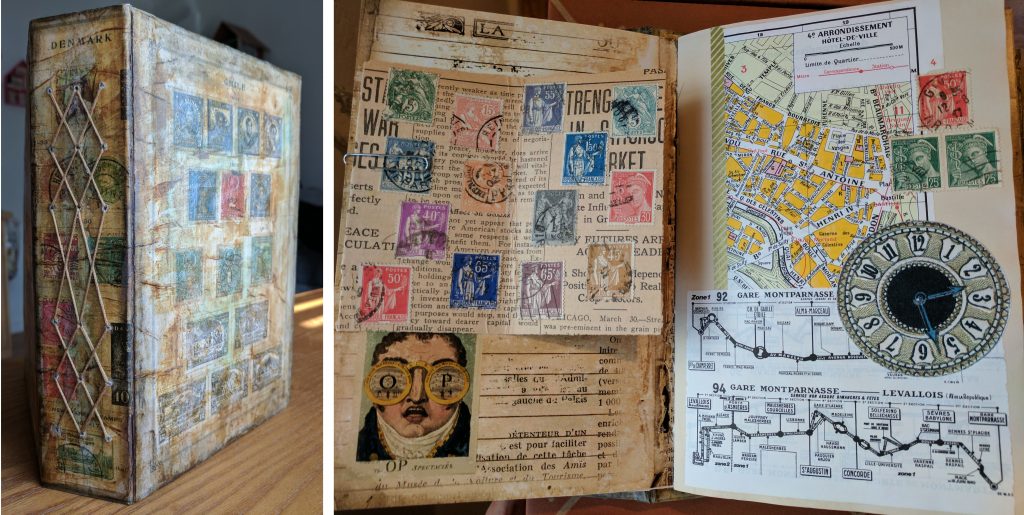
If you’re ready to make gluebooks or would like some inspiration of what to add in yours, you can join the Facebook group Vintage Gluebooks and Pages for lots of ideas. Also, check out my blog post "Getting Started with Collage Art" on this site for a list of ideas where you can find papers around you for your gluebook.

